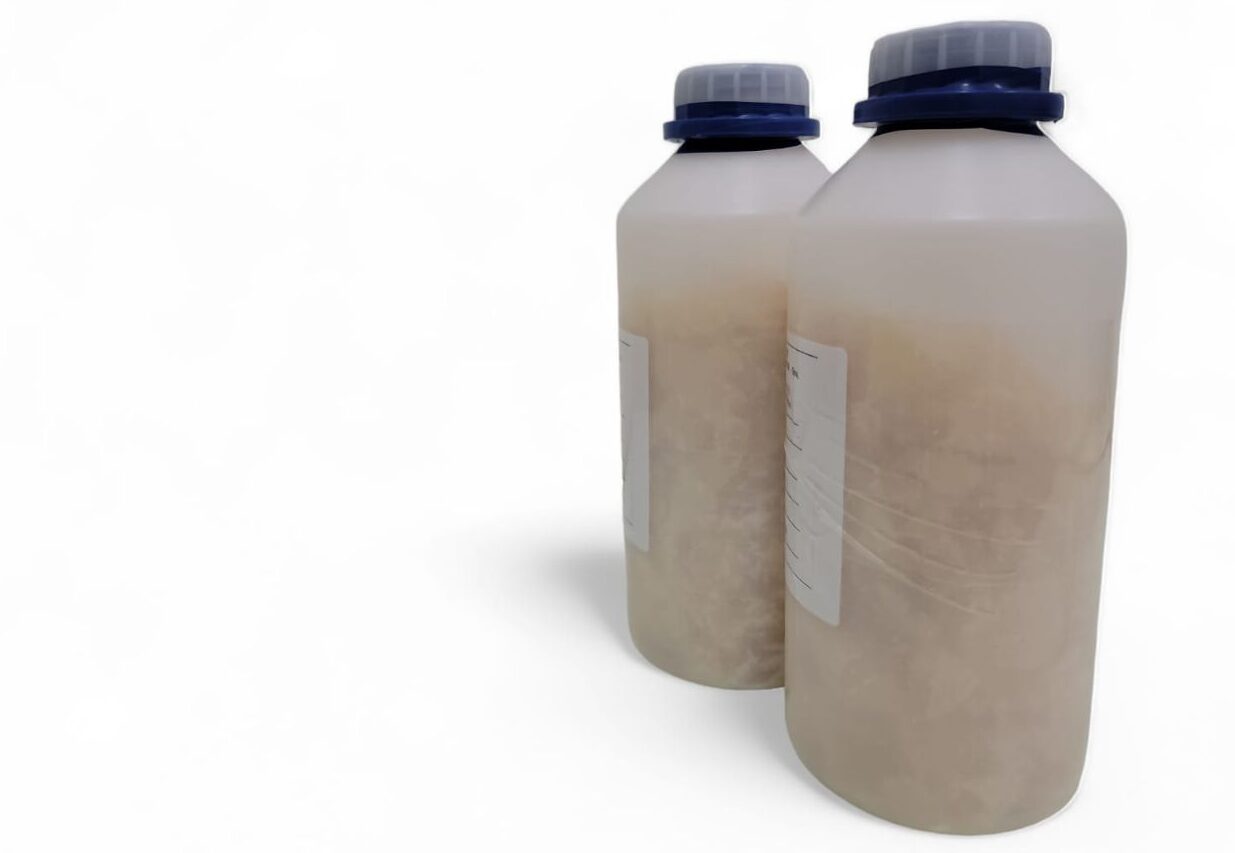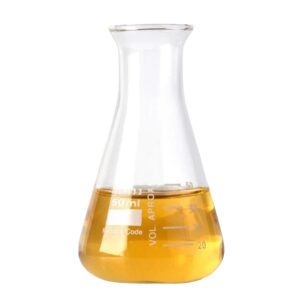LANOLIN PEG-75
INCI Ingredient Lanolin PEG 75 - Innovate formulations with Lanolin PEG 75—elevate your products, empower your brand.

Ethoxylated Lanolin PEG-75 Solid
A water-soluble derivative of anhydrous lanolin is produced through the process of ethoxylation, resulting in solid pieces with a light yellow color.

Ethoxylated Lanolin PEG-75 Liquid
Lanolin Liquid, a waxy substance, is prized in cosmetics for its emollient and conditioning properties, making it effective for treating dry skin.

Ethoxylated Lanolin PEG-75 Flakes
Through ethoxylation, anhydrous lanolin undergoes a transformation into a fully water-soluble derivative, forming solid flakes with a light yellow appearance.

Click here for Specifications
| Description | Yellow solid pieces |
| Color | Gardner 12 maximum |
| Saponification value | 20.0 maximum |
| Ash | 0.25 % maximum |
| Odor | Characteristic |
| Solubility Water | soluble |
| Ethanol | soluble |
| Clarity (10% solution) | Clear to slightly hazy |
| pH (0.5 % in water) | 4 to 8 |
| Acid value | 5.0 maximum |
| Loss on drying @ 105 °C | 0.5 % maximum |
| Melting point (Drop point) | 45 to 50 °C |
| Cloud Point | 75 to 85 °C |
| Description | Yellow to golden yellow liquid |
| Color, Gardner | 11.5 maximum |
| Saponification value | 15.0 maximum |
| Ash | 0.25 % maximum |
| Odor | Characteristic |
| Solubility Water | soluble |
| Ethanol | soluble |
| Clarity | Clear to slightly hazy |
| pH of 10% w/v solution | 5.0 to 8.0 |
| Acid value | 1.5 maximum |
| Loss on drying | 26 % maximum |
| Description | Yellow to Amber flakes |
| Melting Range | 45-50°C |
| Acid Value | NMT 2.0 |
| Water Solubility | Soluble |
| Ethanol Solubility | Soluble |
| Clarity (10% solution) | Clear solution |
| Saponification Value | 14-18 mg/g |
| pH (10% solution) | NLT 6.0 |
| Loss on drying | NMT 0.5% |
Information and Resources on Formulations
Ethoxylated lanolin, also referred to as Lanolin Alcohol Ethoxylate or PEG 75, with the CAS Number 61790-81-6, is a modified variant of lanolin, a natural wax derived from sheep’s wool. Its unique –––emulsifying, moisturizing, and skin-conditioning characteristics make it suitable for a variety of applications. Below are some typical uses:
Cosmetics and Personal Care Products: It is frequently incorporated into creams, lotions, and ointments to leverage its moisturizing benefits. This ingredient also contributes to enhancing the texture and stability of formulations.
Pharmaceuticals: Ethoxylated lanolin is present in topical treatments and ointments, where it serves as a skin-conditioning agent and aids in the delivery of medications.
Hair Care Products: This compound is utilized in shampoos, conditioners, and styling products to boost moisture retention and improve the overall hair texture.
Industrial Applications: In various industrial products, it functions as an emulsifier or surfactant in formulations like paints and coatings.
Textiles and Leather: Ethoxylated lanolin is applied in the processing of textiles and the treatment of leather to improve softness and enhance water resistance.
Food Industry: While it may also be found as an additive in some food items, its use in the food sector is less prevalent compared to these other applications.
Be sure to consult specific regulations and guidelines concerning its intended usage, particularly in food and pharmaceutical contexts.
Other Details:
CAS Number: 61790-81-6
INCI Name: Lanolin PEG 75 / Ethoxylated Lanolin or Lanolin Alcohol Ethoxylate
Chemical Structure and Formula
Ethoxylated lanolin is a diverse composition obtained from lanolin (wool wax), which mainly contains fatty alcohols and esters. The extent of ethoxylation can differ, leading to a range of molecular weights and structures.
Ethoxylated lanolin can play a role in disinfectant formulations due to its properties as an emulsifier and skin conditioner. Here are some specific applications:
Emulsification: It helps stabilize emulsions in disinfectants, allowing for the even distribution of active ingredients, which can enhance the effectiveness of the disinfectant.
Skin Conditioning: In disinfectants intended for skin use (like hand sanitizers), ethoxylated lanolin can provide moisturizing benefits, reducing skin irritation that might be caused by other harsher disinfectant ingredients.
Thickening Agent: It can contribute to the viscosity of liquid disinfectants, helping to improve application and adherence to surfaces.
Compatibility with Other Ingredients: Ethoxylated lanolin can improve the compatibility of various components in disinfectants, ensuring a more uniform product.
Surfactant Properties: It can aid in breaking down organic materials, enhancing the cleaning properties of disinfectants.
Overall, while ethoxylated lanolin is not a primary active ingredient in disinfectants, its functional properties can enhance the overall performance and user experience of the product.
Ethoxylated lanolin, also referred to as INCI Lanolin PEG 75, is frequently utilized in various products, particularly within the cosmetics, personal care, and pharmaceutical sectors. While individual product formulations may change over time, several well-known brands are recognized for incorporating ethoxylated lanolin or related lanolin derivatives in their offerings:
- Neutrogena: This brand, known for its skincare range, typically includes moisturizing components such as lanolin derivatives in its creams and lotions.
- Eucerin: Specializing in dermatological solutions, Eucerin may incorporate ethoxylated lanolin into its moisturizing creams and ointments.
- Aveeno: A number of products from Aveeno, which aim to soothe and hydrate the skin, may use lanolin derivatives.
- CeraVe: Frequently, this brand includes a variety of emollients and skin conditioners in its formulations, some of which are derived from lanolin.
- Aquaphor: Renowned for its healing ointment, Aquaphor might use lanolin derivatives to improve skin moisture.
- Olay: Certain moisturizers and creams from Olay may feature ethoxylated lanolin for its emollient qualities.
- Lush: Known for its emphasis on natural ingredients, Lush often integrates lanolin derivatives in its handcrafted cosmetics and skincare products.
Ethoxylated Lanolin PEG 75 can be incorporated into disinfectant formulations primarily for its emulsifying and skin-conditioning properties. Here are a few types of formulations where it might be used:
1. Liquid Hand Sanitizer
Ingredients:
Ethanol or Isopropyl Alcohol (60-70%)
Ethoxylated Lanolin PEG 75 (as a skin conditioner and emulsifier)
Glycerin (moisturizer)
Aloe Vera extract (for soothing properties)
Essential oils (for fragrance)
Water (to adjust viscosity)
2. Surface Disinfectant Spray
Ingredients:
Quaternary ammonium compounds (active disinfectants)
Ethoxylated Lanolin PEG 75 (to improve texture and adhesion)
Ethanol (to enhance disinfecting properties)
Fragrance (optional)
Water (as a solvent)
3. Foaming Hand Wash
Ingredients:
Sodium lauryl sulfate or other surfactants
Ethoxylated Lanolin PEG 75 (to stabilize the foam and condition skin)
Antimicrobial agents (e.g., triclosan or essential oils)
Glycerin or other moisturizers
Water (as a base)
4.Disinfectant Wipes
Ingredients:
Non-woven fabric (as the substrate)
Quaternary ammonium compounds (for disinfection)
Ethoxylated Lanolin PEG 75 (for skin conditioning)
Surfactants (for cleaning)
Preservatives (to prevent microbial growth)
Water (for the moistening solution)
5. Antiseptic Cream
Ingredients:
Benzalkonium chloride (active antimicrobial agent)
Ethoxylated Lanolin PEG 75 (as an emulsifier and moisturizer)
Other emollients (like glycerin or shea butter)
Thickening agents (like carbomer)
Water (as the base)
These formulations leverage the emulsifying and skin-conditioning benefits of Ethoxylated Lanolin PEG 75, enhancing the overall effectiveness and user experience of disinfectants. Always ensure compliance with regulatory standards and safety guidelines for the specific formulation.
Lanolin, a natural wax obtained from sheep’s wool, serves as a versatile raw material in various industries, particularly in cosmetics and pharmaceuticals. The ethoxylation process of lanolin involves the addition of ethylene oxide (EO) to enhance its properties and extend its applications.
Initial Structure of Lanolin
Lanolin, in its natural state, is a complex mixture of esters, alcohols, and lanolin acids. Its molecular structure forms the basis for the ethoxylation process.
Introduction of Ethylene Oxide (EO)
Ethylene oxide, a reactive and versatile epoxide, is introduced to lanolin in the presence of a catalyst. This catalyst, often an alkaline substance, facilitates the ethoxylation reaction.
Chemical Reaction
During ethoxylation, ethylene oxide reacts with lanolin, leading to the formation of ethoxylated lanolin. This process involves the addition of multiple ethylene oxide units to the lanolin structure, resulting in a product with altered chemical and physical properties.
Catalyst and Reaction Conditions
The ethoxylation reaction is typically carried out under controlled conditions, including specific temperatures and pressures. The catalyst assists in promoting the reaction efficiency and influencing the final characteristics of the ethoxylated lanolin.
Enhanced Properties
Ethoxylation imparts desirable properties to lanolin, such as improved solubility, emulsifying capabilities, and reduced viscosity. These modifications enhance the versatility of ethoxylated lanolin in various industrial applications.
Applications of Ethoxylated Lanolin
The ethoxylation process transforms lanolin into a more adaptable and multifunctional ingredient. Ethoxylated lanolin finds applications in cosmetics, skincare products, pharmaceuticals, and industrial formulations, where its modified properties contribute to product performance and stability.
In summary, the ethoxylation of lanolin is a controlled chemical process that transforms the natural wax into a more versatile and valuable compound. By carefully manipulating the molecular structure through ethoxylation, lanolin becomes a key ingredient in a wide range of products, offering enhanced functionality and performance.
FAQs
- Lanolin PEG 75 is typically available in 50 kg and 210 kg HDPE drums. Ethoxylated Lanolin PEG 75 is also offered in 25 kg bags, often in flakes form, to facilitate easy handling and application.
- Our minimum order quantity is 500 kg, allowing for bulk purchasing suitable for various manufacturing needs.
- Free samples are possible in certain cases. For samples, please get in touch with us for more details on info@bazayan.ch
Request For Free Quote
Have any questions? We are always open to talk about your business, new projects, creative opportunities and how we can help you.
